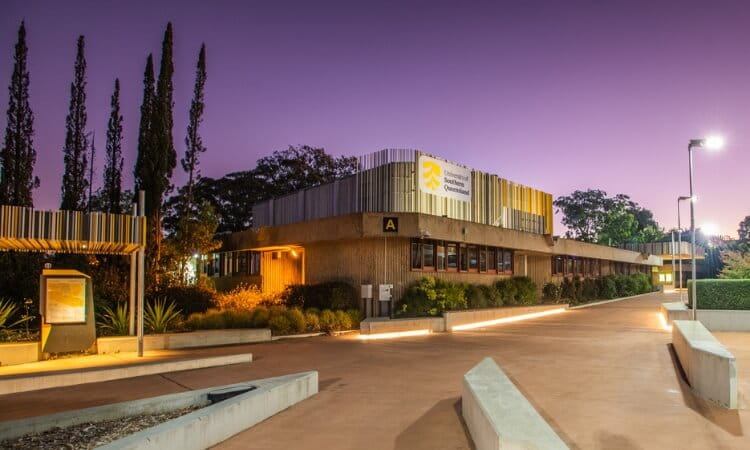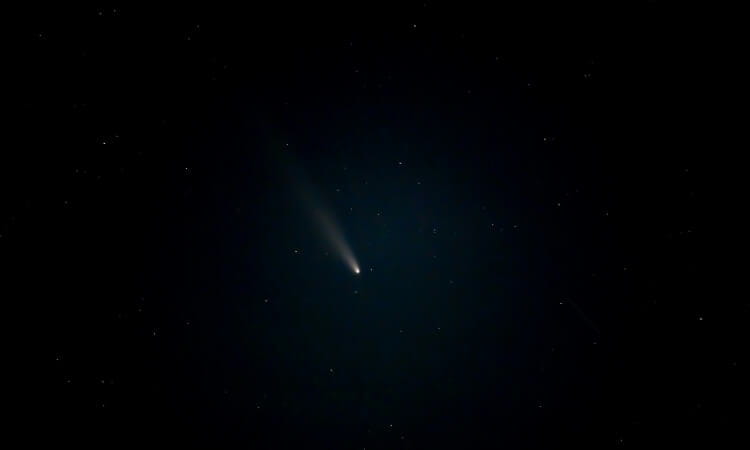Since the dawn of civilisation, the night sky has been an inspiration – shaping our discoveries, guiding the natural world and forming the basis of rich cultural traditions.
But now, a rising tide of artificial satellites and related debris are brightening the night sky, a phenomenon which could threaten the future of astronomical research.
In a new paper published in Nature Astronomy today, an international team of scientists, led by John Barentine, discussed how the growing amount of light reflected by low-Earth orbit (LEO) satellites and space debris will likely diminish the effectiveness of sky surveys and interfere with ground-based data collection.
Among the researchers is University of Southern Queensland PhD student Jessica Heim, who, along with several of her co-authors, serves on the American Astronomical Society's Committee to Protect Astronomy and the Space Environment (COMPASSE).
“The night sky is part of our shared heritage and I think this is an issue everyone should be aware of,” Ms Heim said.
“We’re still in the early stages of these major changes happening in orbit, so it’s important to start having these conversations now rather than once there’s a bigger issue at hand.”
In a previous paper, scientists predicted a 12 per cent increase in the brightness of the night sky by the end of this decade, caused by reflected sunlight bouncing off of increasing numbers of satellites and debris fragments.
Using these results, the team modelled the potential changes in performance of the Vera Rubin Observatory’s Legacy Survey of Space and Time (LSST), a US-led sky survey program scheduled to begin operations in 2025.
What they found was astonishing: a brighter night sky was predicted to reduce the efficiency of the LSST by around 7.5 per cent, adding around $21.8 million to the project cost.
“For an observatory such as Vera Rubin, where researchers are trying to detect dim and faraway objects, a brighter sky means it will take longer to complete the research,” Ms Heim said.
“A brighter sky would also limit our ability to observe very dim objects, which will impact our ability to make new discoveries.
“There are also concerns that objects, such as near-Earth comets or potentially hazardous asteroids would be less likely to be seen.”
Astronomy researchers won’t be the only group impacted by brighter night skies.
Ms Heim said the changes in night-time sky brightness could be noticeable to the human eye, particularly in places that currently have dark, unpolluted night skies.
“Over time, the fainter stars and parts of the Milky Way may be harder for the average backyard observer to see,” she said.
“In many cultures, these stars are significant, embedded in stories, philosophy and religion. One concern I've commonly heard, particularly from members of Indigenous communities, is that human activities in orbit are changing the night sky without broader societal consultation with people who stand to be impacted by such changes.
“From an ecological perspective, there are species which utilize the stars and the orientation of the Milky Way to aid in their navigation. Many species' circadian rhythms are governed by overall levels of daytime light versus night-time dark. So, it is possible that increased visible satellites and a brighter night-time sky could have an adverse effect for them.
“If we can learn from Earth-based environmental issues, perhaps we can do a better job in how we engage with the space environment and avoid repeating some of the mistakes of our past on a larger scale in space.”



